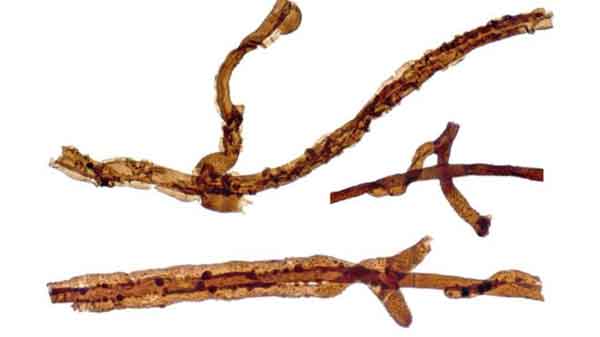
Durham, UK (BBN)-It is smaller than a human hair, resembles a mushroom, and is thought to be the earliest fossil of a land-dwelling organism.
The fungus, which dates back 440 million years, spent its life under the ground rotting down matter, reports BBC.
Even the scientist who analysed it - Dr Martin Smith - admits it is a ''humble little fungus''.
But the pioneer, known as Tortotubus, could help explain how early life colonised the rocky barren Earth.
Most scientists agree that life moved from the sea to the land between 500 and 450 million years ago.
But in order for plants and animals to gain a foothold on terra firma there needed to be nutrients and soil to support them.
Fungi kick-started this process, by getting nitrogen and oxygen into the rudimentary soil.
FOSSIL RECORD
Dr Smith says there were probably bacteria and algae already on land - but these are rarely preserved in the fossil record.
This makes Tortotubus probably the oldest fossil of a land-dwelling organism yet to be found.
Dr Smith told BBC News: ''It's the first fossil of an organism that only lived on land.
''It would have broken down dead, decayed material - essentially rotted it.''
MUSHROOM-FORMING FUNGI
The fossilised fungus has been found in many locations, including Sweden and Scotland.
Each microfossil is shorter than a human hair is wide and has a rope-like structure similar to that of some modern-day fungi.
Scientists think that early fungi contributed to soil formation and the rotting process, thereby paving the way for flowering plants and trees, then animals.
''During the period when this organism existed, life was almost entirely restricted to the oceans: nothing more complex than simple mossy and lichen-like plants had yet evolved on the land,'' said Dr Smith, who carried out the research at the University of Cambridge but is now based at Durham University.
''But before there could be flowering plants or trees, or the animals that depend on them, the processes of rot and soil formation needed to be established.''
The research is published in the Botanical Journal of the Linnean Society.
BBN/SK/AD